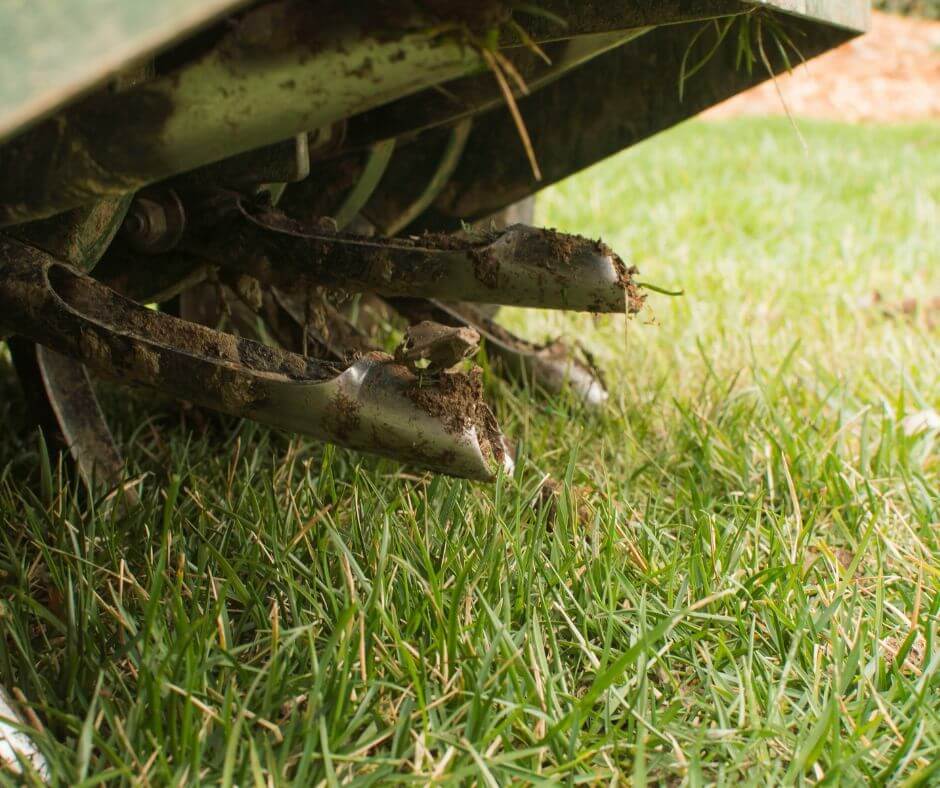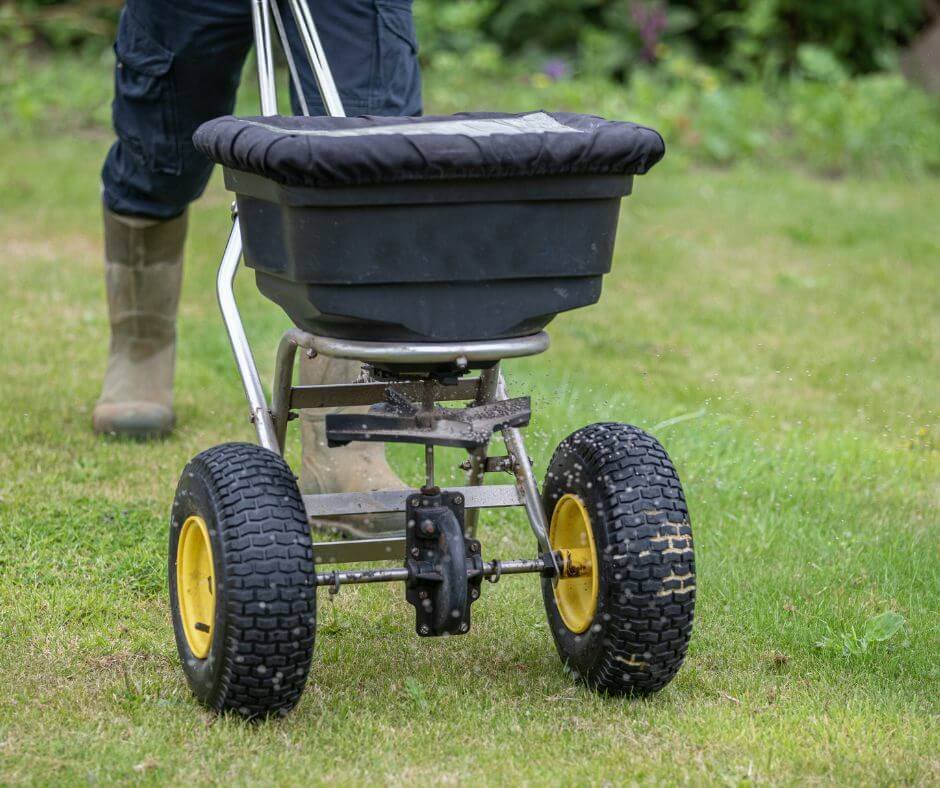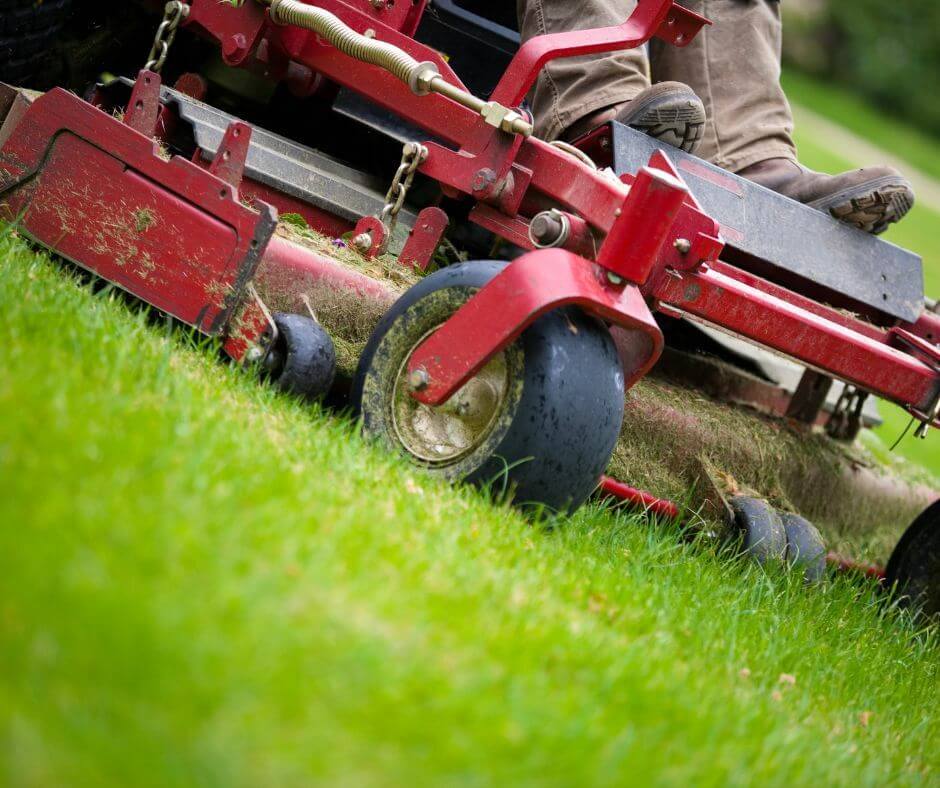Contact a Turfcor professional today and set up an Aeration & Overseeding consultation to get on the path to a healthier, greener lawn.
Maintaining a lawn in Pennsylvania can be complicated. Grass-type, irrigation, soil pH, and automotive or foot traffic are all elements that affect a lawn’s overall health. And that’s only to name a few! Weather also has a big influence in this region of the nation. We have cold winters and hot summers, both of which can be detrimental to a lawn’s health.
A healthy lawn, on the other hand, will be able to survive the yearly ups and downs of weather as well as the other elements. So, how do you make your grass more robust?
Aeration and overseeding are two of the most important tasks you can undertake for your lawn each year (or as needed). Doing these two tasks together will yield the best results in strengthening the overall health of your lawn.
What are Aeration and Overseeding?
 Aeration is the act of creating holes in your lawn by using a specific piece of equipment called a core aerator to pull little soil plugs (called “cores”). It allows more water, oxygen, and nutrients to permeate deeper into the soil and down to the root zone. This is significant because it provides a better environment for the root system to flourish, and healthier roots equal healthier grass.
Aeration is the act of creating holes in your lawn by using a specific piece of equipment called a core aerator to pull little soil plugs (called “cores”). It allows more water, oxygen, and nutrients to permeate deeper into the soil and down to the root zone. This is significant because it provides a better environment for the root system to flourish, and healthier roots equal healthier grass.
Overseeding can help fix bare spots in your lawn, both large or small. There are also advantages to overseeding if you typically only have one type of grass as well. By strategically introducing another type of grass, it can make your grass turf thicker, crowding out weeds such as crabgrass. It can also make the lawn more disease-resistant. And if your area is prone to drought, introducing a more drought-resistant grass-type can help keep your lawn greener much longer.
When Is The Best Time To Aerate and Overseed My Lawn?
There are three basic conditions to take into factor:
-
The type of grass that’s growing in your lawn.
-
Your region’s current weather conditions.
-
The amount of water your grass has received.
If you have a lawn with cool-season grass (which is the most typical type of grass in the Northeast U.S.) and are wondering when to aerate it, early fall is the time to do it!
The days are growing shorter and fall is in the air, making it a wonderful time to aerate and overseed. The trick is to aerate your lawn during its peak growing season, which is early fall for cool-season lawns, so it can recover quickly.
From early September until mid-October, the earth is still warm enough for seedlings to sprout. The objective of fall overseeding is to help your lawn grass grow deep root systems before the winter months arrive.
Contact A Turfcor Lawncare Professional
Can You Aerate And Seed At The Same Time?
 People frequently overlook soil compaction as the primary issue with their grass. When compacted soil is the true reason for a struggling lawn, it’s typically blamed on fertilizer mistakes, drainage concerns, insects, and disease.
People frequently overlook soil compaction as the primary issue with their grass. When compacted soil is the true reason for a struggling lawn, it’s typically blamed on fertilizer mistakes, drainage concerns, insects, and disease.
Overseeding is used to try to solve the problem but it is usually ineffective since the seeds are unable to root and develop.
It is possible to aerate without overseeding but the problem of weed seeds germinating when sunlight is introduced through the holes that were created is highly likely. So, the most effective solution is aeration followed by overseeding. Aeration creates ideal tiny nests (holes) for seeds to fall into and develop in. Because you’ve introduced a new grass seed, it will use all of the available water, oxygen, and nutrients, starving any weed seeds that start to sprout.
When done correctly, aerating and overseeding will give your grass a whole new look!
Should I Fertilize Before or After Aeration?
Your grass is ready for overseeding and fertilization as soon as aeration is completed. Seeds will have great soil exposure, and fertilizer is delivered straight to the roots of your grass through the holes.
How Do I Prepare My Lawn For Aeration and Overseeding?
Here are a few things you should prepare your lawn for to make sure that the core aeration and overseeding process is both safe and effective.
Flag any hidden objects.
Sprinkler heads, in-ground lighting, invisible fences, valve box covers, and other concealed items in your lawn should be marked as to not cause any damage to equipment or any unforeseen accidents.
Only use marking flags, ideally white for the sprinkler system and a different color for the invisible fence. Any hardware shop will sell you marking flags for a reasonable price.
Simply turn on your sprinkler system and set a marker in the ground where a sprinkler head appears.
Mow Your Lawn Lower Than Usual At Around 1-½” And Clean Up Trimmings and Debris.
 Mow your lawn one to two days before the treatment is scheduled and cut it lower than normal.
Mow your lawn one to two days before the treatment is scheduled and cut it lower than normal.
We suggest setting your mowing height to around 1-½” (one and a half inches). This prevents scalping while also getting the lawn low enough to make both the aeration and overseeding effective.
Also, remove any trimmings, leaves, debris, or other material that might obstruct aeration.
Aeration and Overseeding Services in Eastern Pennsylvania
Aerating and overseeding allow your grass to breathe, promote healthy root development, and enhance water drainage. Call Turfcor Lawn and Tree Care if you need a professional to help you take care of your lawn.
We offer aeration and overseeding services in Eastern Pennsylvania, as well as other lawn care services that will keep your yard looking great all season. We serve the areas around Wilkes-Barre/Scranton, Allentown, Lancaster, and the places near them. Contact us right away to get going!